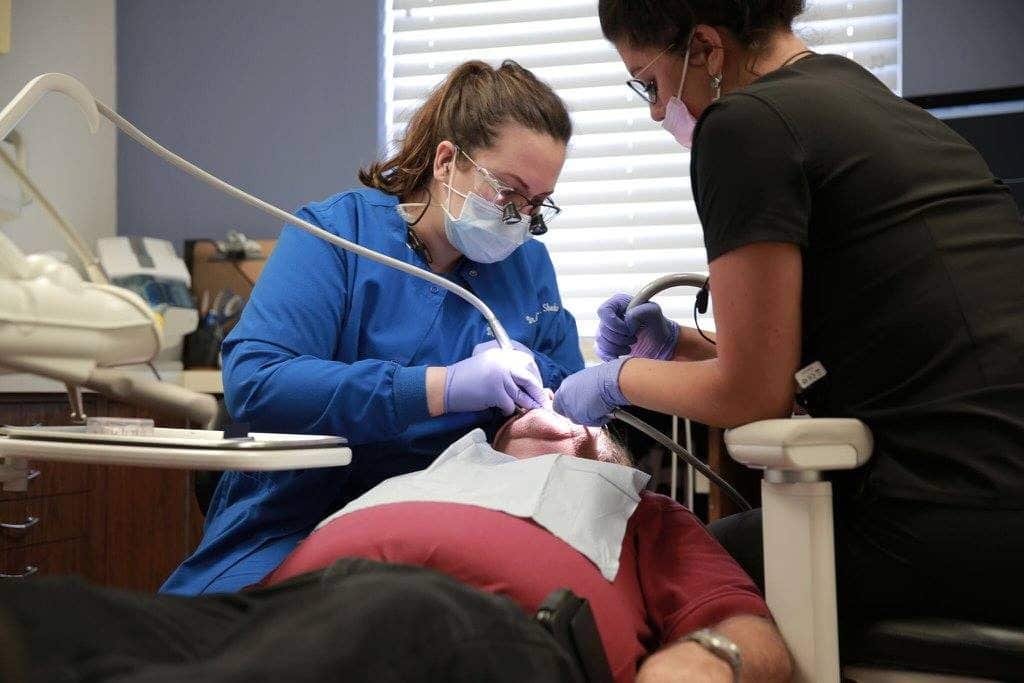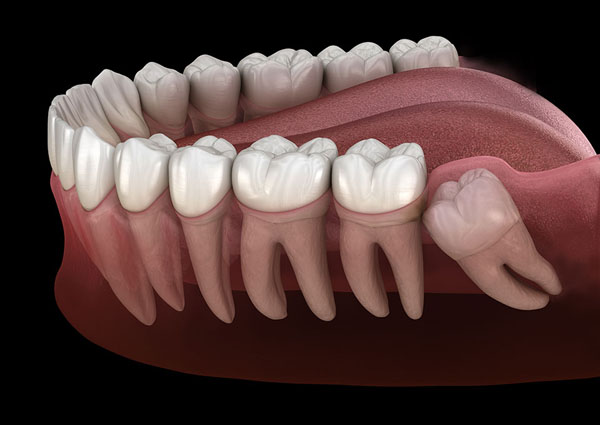Four Main Types of Wisdom Teeth Impactions
There are four main types of wisdom teeth impactions:
- Mesial (angular) impaction
- Vertical impaction
- Horizontal impaction
- Distal impaction
Mesial (Angular) Impactions
Mesial impactions are the most common type of wisdom tooth impaction. In this case, the tooth is partially erupted and angled forward, towards the front of the oral cavity, rather than towards the back. This positioning can cause issues with adjacent teeth, as the impacted tooth may press against them and damage them.
The decision to extract a mesial impacted tooth depends on several factors, such as the angle of the tooth and the extent to which it’s impacted. Dentists usually prefer to carefully observe mesial impactions before determining whether extraction is necessary. This allows them to monitor any changes in the tooth’s position and assess the potential risk to surrounding teeth before taking action.
Vertical Impactions
Vertical impactions occur when the wisdom tooth is in the correct position but remains below the gums. In many cases, these impactions don’t require extraction, as they may not cause significant issues. However, there are instances where a vertically impacted wisdom tooth can exert pressure against the bone or displace a neighboring molar, leading to oral health complications.
In these cases, our dentist may suggest surgical removal of the vertically impacted tooth to prevent further damage and alleviate any discomfort.
Horizontal Impactions
Horizontal impactions, whether partially or fully impacted, happen when the tooth lies entirely sideways beneath the gums, pressing against neighboring teeth. This can result in significant pain and damage to the adjacent teeth, making it essential to address horizontal impactions promptly.
Surgical extraction is the recommended course of action for horizontally impacted wisdom teeth. In some cases, it may also be necessary to remove some of the jawbone to extract the impacted tooth successfully. By removing the horizontally impacted tooth, you can prevent further damage to surrounding teeth and alleviate any pain or discomfort associated with the impaction.
Distal Impactions
Distal impactions are relatively rare and occur when the wisdom tooth is angled towards the back of the mouth. The decision to extract a distal impacted tooth depends on the angle of the tooth and the extent of impaction. In some cases, distal impactions may not require extraction, while in others, the tooth’s position could pose a risk to oral health and require removal.



